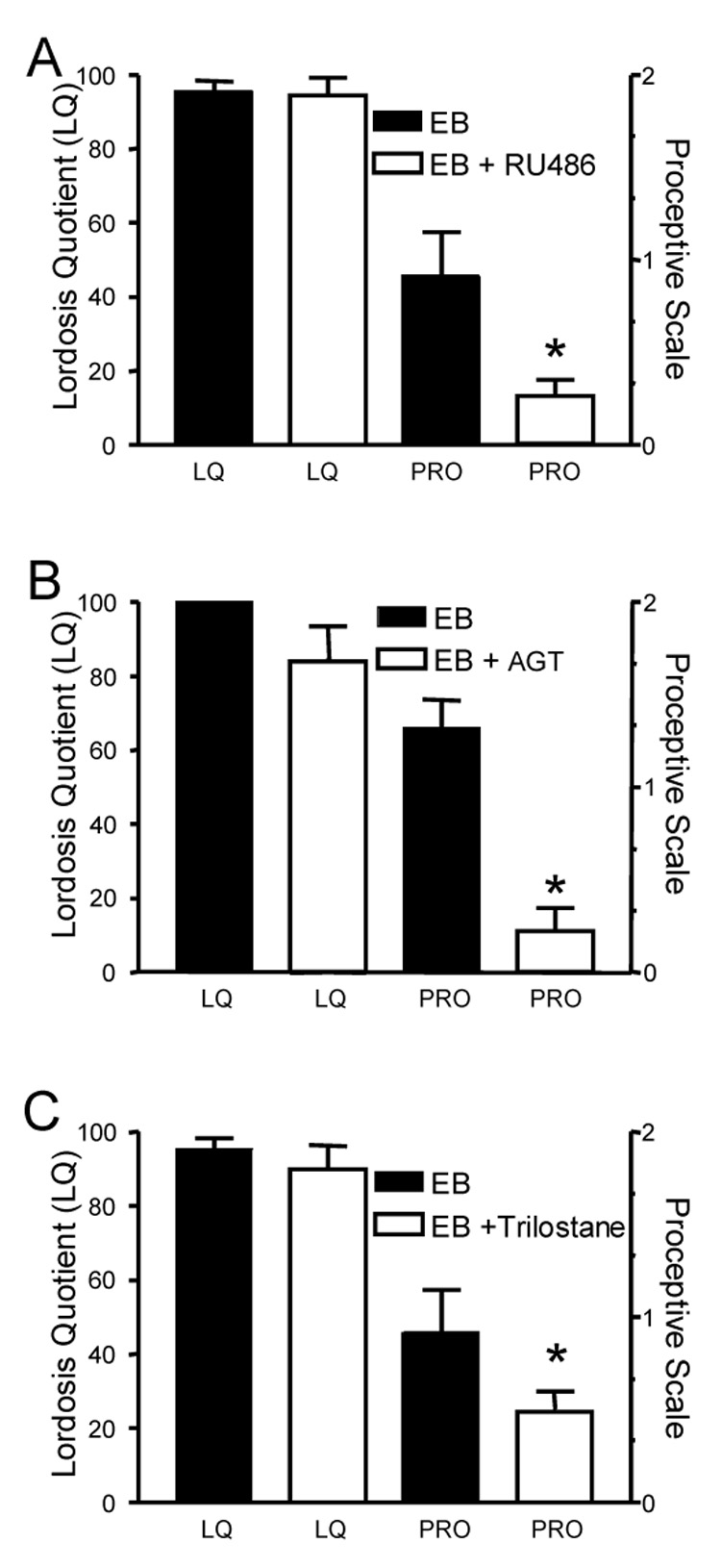Figure 8.

Progesterone receptor activity and neurosteroid synthesis are needed for proceptive, but not receptive sexual behaviors. In OVX/ADX rats, EB (10 µg) was given every 4 days and animals were tested for receptive and proceptive behaviors at 52–54 hours after treatment. Figure 8A. animals were treated with EB and then with either RU486 (EB + RU486; 5 mg) or EB 1 hour prior to testing. Antagonism of progesterone receptors with RU486 had no effect on LQ compare to the EB + VEH treated animals (Mann-Whitney, p > 0.05). However, proceptivity was significantly decreased in the EB + RU486 treated animals compared with EB animals (Mann-Whitney; p < 0.05). Data are means ± SEM of 12 animals. * indicates significantly less than the EB treated animals, p < 0.05. Figure 8B. Aminoglutethimide (EB + AGT; 10 mg), an inhibitor of P450 side chain cleavage enzyme activity, or EB was administered every 24 hours for 3 days prior to testing in EB (10 µg) treated rats. There was no significant change in LQ score between EB + AGT and EB (Mann-Whitney, p<0.05). In contrast to the receptive behavior, AGT significantly decreased the proceptive scale score when compared with EB (Mann-Whitney, p<0.05). Data are means ± SEM of 12 animals. * p < 0.05 versus EB treated control group. Figure 8C. Trilostane (EB + Trilostane 16.5 mg) or EB was administered every 24 hours for 3 days prior to testing. Similar to AGT, LQ score between EB + trilostane and EB was not affected (p > 0.05), but receptive behavior was significantly decreased in the EB + trilostane treated animals compared with EB treated (Mann-Whitney, p < 0.05). Data are means ± SEM of 12 animals. * = indicates less than EB-only treated control animals p < 0.05.
